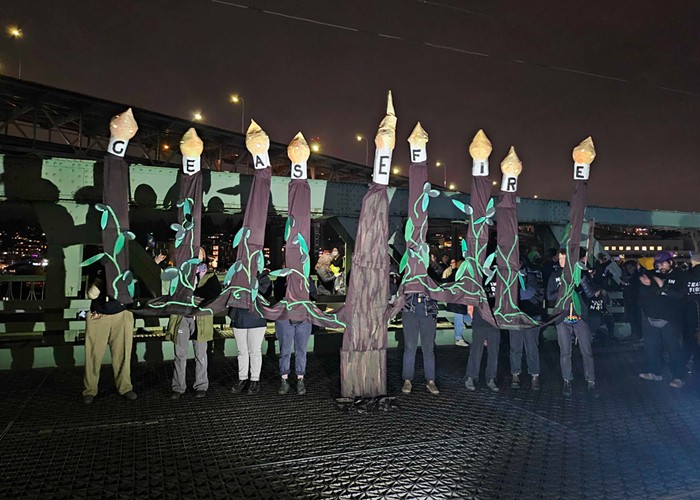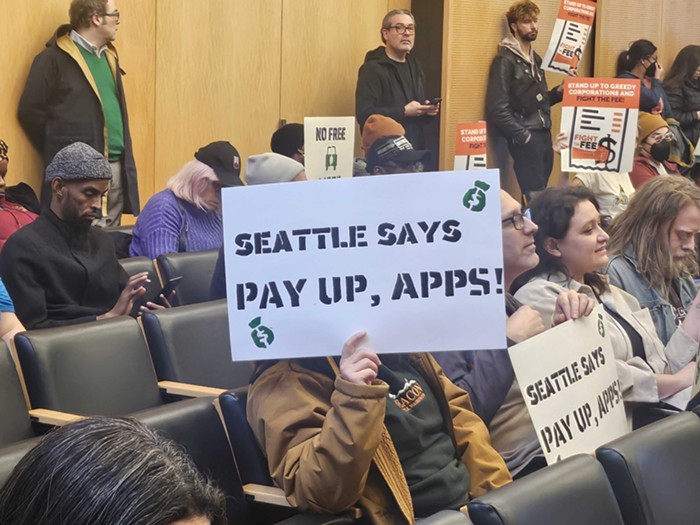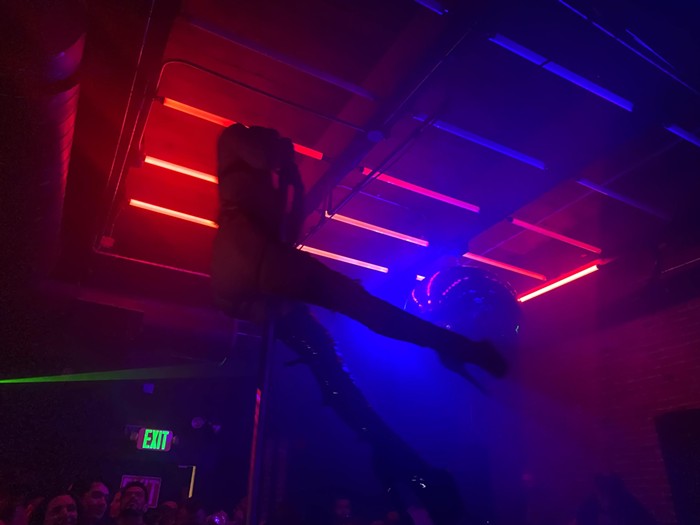Remember a couple years back when about 3,000 raucous demonstrators crowded into Westlake Park for a permitted rally in support of health-care reform? No? That's because unless you were there, you probably never even knew it happened. One of the largest political demonstrations to hit our downtown in years garnered almost zero media coverage.
Yet a few months later when, at most, a couple hundred angry teabaggers gathered on a street corner to mark their party's anniversary, the Seattle Times devoted a reporter, a photographer, and 20 column inches to the celebration.
Yes, the Tea Party garnered a disproportionate chunk of media coverage and mindshare, partially because much of our corporate media ownership sympathizes with its cause, if not downright instigates it. But say what you want about the teabaggers, they also told a pretty good story. Not a particularly coherent story, or a well-informed one, but a good story nonetheless, in that they never shied away from the narrative primacy of conflict. And since reporting is at its core storytelling, conflict is hard for reporters to resist.
Sound familiar?
That, of course, is the whole key to the Occupy movement's media success: Intentionally or not, it is a movement entirely grounded in conflict. Its name is an active verb that implies conflict, and its motto a constant reminder of the economic conflict between the 1 percent and everyone else. The ongoing battles to establish and maintain its urban encampments may appear to be a distraction from Occupy's message of Wall Street corruption and income inequality, yet these standoffs serve as a physical manifestation of the symbolic conflict that has always been at the movement's core. And of course the occupiers' many injuries suffered at the hands of fist-throwing, bicycle-shoving, stun-grenade-wielding police—the pepper-spraying of clergy, peaceful UC Davis students, 84-year-old Dorli Rainey, and at least one pregnant woman (who has since said that she miscarried)—all provide audiences with conflict as compelling as anything you'll find on TV or, better yet, on YouTube.
Skip forward to November 17, when many of the groups that organized the ignored 2009 health-care rally borrowed the mantle and tactics of Occupy to shut down a goddamn bridge. Helicopters flew, TV news vans descended, and their message of jobs and infrastructure repair became front-page news. "University Bridge seized in rush-hour rally for jobs," the Seattle Times headline declared.
Why? Because it was a damn good story.
So to all of you who claim to support the Occupy movement's objectives, but disdain its tactics, I ask you: What exactly don't you get about civil disobedience? Shutting down bridges and intersections are an inconvenience for ordinary citizens, you argue, while camping in public spaces is an eyesore and a public-safety hazard.
Really? So what would you rather they do? Apply for a permit and then orderly assemble in Westlake Park to politely recite their grievances (though not during the holiday shopping season, of course, because that might interfere with commerce)?
Been there, done that. It doesn't work.
But civil disobedience does. Legislators will convene November 28 to close a $2 billion budget gap, and Occupy Olympia will be there to greet them. With many of the cuts expected to once again come at the expense of education, health care, and social programs, it'll be good for lawmakers to hear from the 99 percent for a change, instead of just the usual corporate lobbyists.
The Occupy movement is a lot of things, some of them good and some of them bad, and there's no question that their tactics have alienated some of their supporters. But there's also no arguing with Occupy's success at shifting the public debate toward issues like jobs and economic justice. ![]()



















